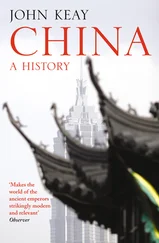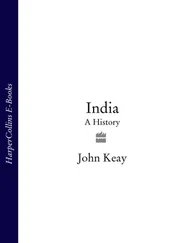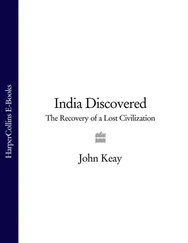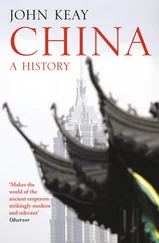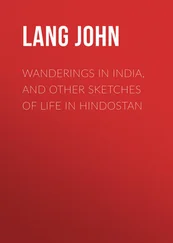Thus, in the space of two reigns which conveniently straddled the long life of the Buddha, Magadha had emerged from comparative inconsequence to dominate the lower Ganga with a territorial reach that extended from the Bay of Bengal to the Nepal Himalayas. Further up the Ganga, the kingdom of Vatsya, possibly the successor state to that of the Kuru of Hastinapura, still flourished with its capital at Kaushambi (near Allahabad). So did the kingdom of Avanti, based on Ujjain (near Indore) far to the south on the banks of the Narmada river. Kaushambi and Ujjain were engaged in their own power struggle. Into it Magadha seems occasionally to have been drawn, and from it Ajatashatru’s successors were able to profit, although it is unclear when Magadhan supremacy was recognised in these distant regions.
In fact the grave uncertainty which surrounds the history of Magadha immediately after Ajatashatru extends even to the succession. Between Ajatashatru’s death some time between C380 BC and C330 BC (according to the ‘short chronology’) and the accession of Chandragupta Maurya in C320 BC the sources speak mainly of court intrigues and murders. Evidently the throne changed hands frequently, perhaps with more than one incumbent claiming to occupy it at the same time. Eventually it was secured by Mahapadma Nanda, the son of a barber and therefore not only a usurper but also a low-caste sudra . According to the orthodox Puranas , he invoked his caste status to conduct a vendetta against all ksatriyas . Since most existing kings were, or claimed to be, ksatriyas , this represented a declaration of war on the entire political order. Remarkable conquests resulted. By 326 BC the Nanda family was ruling over a greatly extended kingdom which included the whole of the Ganga valley plus Orissa and parts of central India.
Mahapadma Nanda himself may have been responsible for these conquests. He is the first to be described as a ‘one-umbrella sovereign’, a concept closely related to the Buddhist idea of a pan-Indian cakravartin or ‘world ruler’ and implying the association of all existing polities under a single sovereign. Patriotic Indian historians tend to pounce on this early evidence of national integration and to hail Mahapadma Nanda as ‘the first great historical emperor of Northern India’. The wealth of the Nandas also became legendary, and was supposedly buried in a cave in the bed of the Ganga. Their exactions and unpopularity were remembered too, although this may have been the result of failing to placate either brahmanical or Buddhist opinion with the munificence expected of royal patrons.
The Nanda family undeniably commanded the most formidable standing army yet seen in India. Military statistics readily lend themselves to exaggeration, especially when provided by a disappointed adversary. Yet the Nandas’ army of 200,000 infantry, twenty thousand cavalry, two thousand four-horse chariots and three to six thousand war-elephants would have represented a formidable force even if decimated by roll-call reality. It was certainly enough to strike alarm in stout Greek hearts, to awaken in them fond memories of Thracian wine and olive-rich homesteads beside the northern Aegean, and to send packing the age’s only other contender as a ‘one umbrella’ world ruler.
Alexander the Great’s Indian adventure, though a subject of abiding interest to generations of classically-educated European historians, is not generally an episode on which historians of Indian nationality bother to dwell. They rightly note that it ‘made no impression historically or politically on India’, and that ‘not even a mention of Alexander is to be found in any [of the] older Indian sources.’ 8‘There was nothing to distinguish his raid in Indian history [except “perfidious massacres” and “wanton cruelty”]… and it can hardly be called a great military success as the only military achievements to his credit were the conquest of some petty tribes and states by instalment.’ 9
Alexander’s great achievement was not invading India but getting there. A military expedition against the Achaemenid empire, originally planned by his father, became more like a geographical exploration as the men from Macedonia triumphantly probed regions hitherto undreamed of. Anatolia, the modern Turkey, was overrun in 334–3 BC. To protect his southern flank before invading Persia, Alexander then swept down through Phoenicia (Syria and Palestine) to claim Egypt and Libya. That was in 333–2. In 331–0 the last Achaemenid ruler was chased from his homeland and Persepolis was sacked. The twenty-five-year-old Alexander was now master of all that had comprised the largest empire the world had yet seen – all, that is, except for its easternmost provinces, including Gandhara and ‘India’.
Although Indian troops still served in the Achaemenid forces, it seems that Gandhara and ‘India’ had probably slipped from direct Achaemenid rule some time in the mid-fourth century BC. For Alexander it was enough that once upon a time these provinces had indeed been Persian; to excel Darius and Xerxes, he must needs take them. First, though, another long detour was necessary, this time along his northern flank. In 329–8 he pushed north-east into Arachosia (Afghanistan) and then crossed in succession the snows of the Hindu Kush, the swirling Oxus river and the parched scrubland of Sogdia (Uzbekistan). He then laid claim to the Achaemenids’ central Asian frontier on the distant Jaxartes (Syr) beyond Samarkand. It was not till late 327 BC that, returned to the vicinity of Kabul, he was ready with a force of fifty thousand to cross India’s north-west frontier.
Determined now to upstage not only the empires of Darius and Xerxes but also the mythical conquests of Heracles and Dionysos, Alexander seems increasingly to have seen his progress in terms of a Grail-like quest for the supposedly unattainable. He sought the ‘ocean’, the ultimate limit of terrestrial empire. Through knowledge of this great ‘beyond’, he aspired to a kind of enlightenment which, although very different from that of the Buddha, would become a cliché of Western exploration. More crudely, he hankered after sheer bloody immortality. ‘His motives need a little imagination,’ writes the best of his biographers, who then quotes one of Alexander’s companions: ‘The truth was that Alexander was always straining after more.’ 10
More was precisely what India offered. Like a tidal wave, news of Alexander’s prowess had swept ahead of him, flattening resistance and sucking him forward. Indian defectors from the Achaemenid forces primed his interest and paved the way; local malcontents promised support and provided elephants; judicious potentates sought his friendship. Principal amongst the latter was a king known to the Greeks as ‘Omphis’ or ‘Taxiles’. As the latter name implied, he was the ruler of Taxila, reportedly the largest city between the Indus and the Jhelum; and from a chance mention in an appendix to Panini’s grammar he has since been identified as Ambhi, an otherwise enigmatic figure in Indian tradition.
‘The first recorded instance of an Indian king proving a traitor to his country’ 11seems an over-harsh judgement on the ambiguous Ambhi of Taxila. Alexander had divided his forces so that half marched largely unopposed down the Kabul river and across the Khyber Pass, while he himself led the remainder by a northerly route through the wintry hills to Swat. There, up among the pine forests of the supposedly impregnable hill fort of Aornos (Pir-i-Sar), he inflicted one of several vicious and salutary defeats on the mountain tribes. By the spring of 326 BC, when back in the plains he crossed the Indus to join up with the rest of his forces, the Macedonian’s reputation stood high.
Читать дальше



